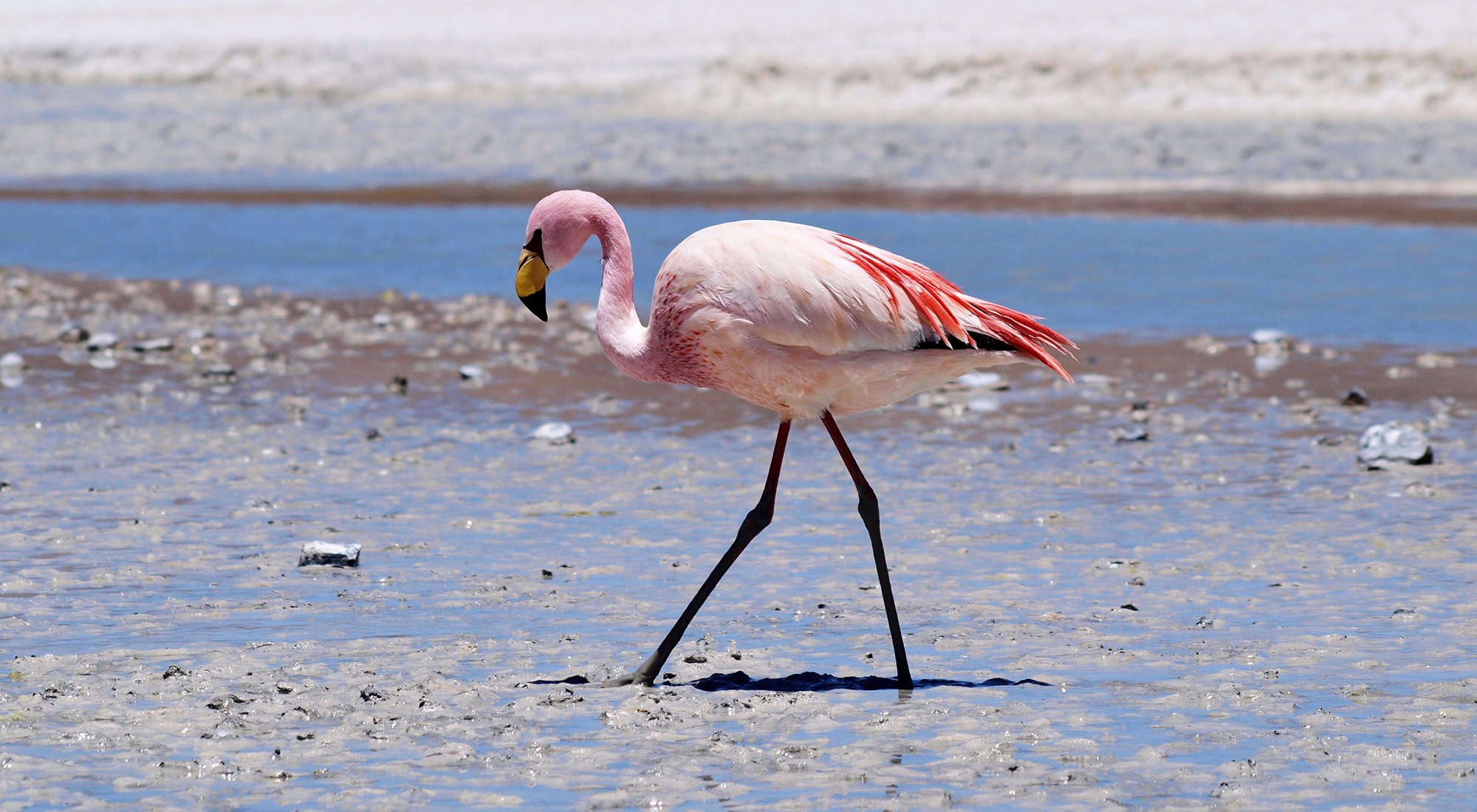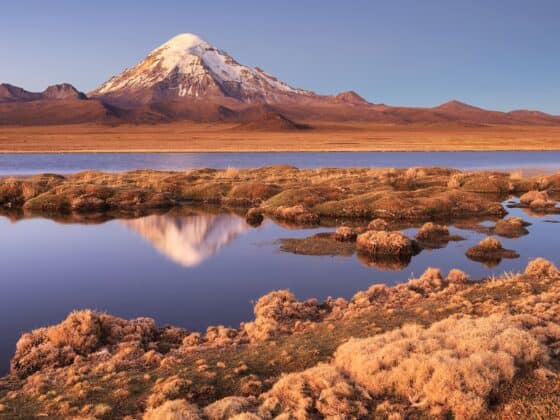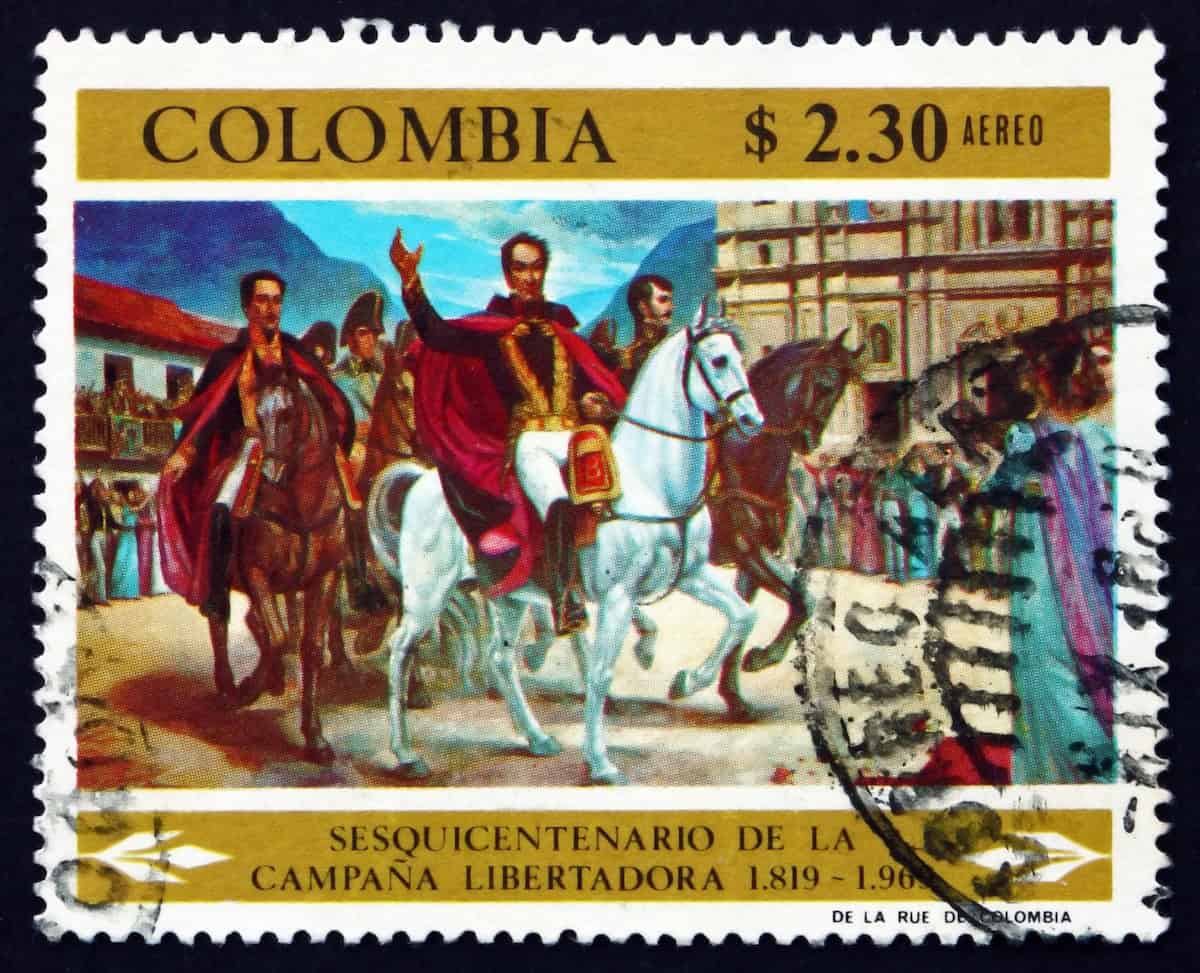Birdwatching
Birdwatching is just getting underway in Bolivia as an organized activity. It offers great potential but requires considerable effort. The country is estimated to have over 1300 bird species, about 40% of the total found in South America, which range from macaws to condors, and hummingbirds to rheas. All national parks have opportunities for birdwatching, which can be combined with other tours. Parque Nacional Madidi has an estimated 900 bird species, and a couple of comfortable lodges. Parque Nacional Amboró has 850 species and is close to the resort towns of Samaipata and Buena Vista. Parque Nacional Tortoro is home to the rare red-fronted macaw.
Reserva Eduardo Avaroa, visited on most salar tours, has three species of flamingo as well almost 70 other bird species.
Climbing
Bolivia has nearly 1000 peaks over 5000 m (12 at or above 6000 m) in four cordilleras: the Real (the main area for mountaineering), Apolobamba, Quimza Cruz and Occidental. The climbing season is May-September.
In June-August the weather is better and more stable than in any other major mountaineering area in the world. Proper technical equipment, experience and/or a reputable guide are essential. A number of summits are achievable by acclimatized beginners with a competent guide and the correct equipment. Popular summits include: Huayna Potosí (6088 m; two days), Pequeño Alpamayo (5370 m; three days), Illimani (6439 m; four days) and Bolivia’s highest mountain, Sajama (6542 m; four to five days). Other peaks of 6000 m or over are: Ancohuma (6427 m), Illampu (6368 m), Chearoco (6104 m) and Chachacomani (6000 m).
Mountain biking
Experienced, fit and acclimatized riders can choose from a huge range of possibilities in Bolivia, with unlimited scope for exploration. At the same time, a single tourist ride – dubbed the ‘world’s most dangerous road’ – has become so popular with mainstream visitors as to spawn an industry of its own. And for good reason, as this legendary route is spectacular. Beginning at La Cumbre, a mountain pass above La Paz at 4725 m where there is often snow, it drops more than 3600 m in around four hours and 64 km to the subtropical jungle near Coroico. For most of the route the road is little more than a bumpy, rocky ledge carved into the rock face of the mountains. It lives up to its reputation for danger, so make sure you sign up with a reputable operator; check all equipment carefully before heading out and ride carefully. Some operators also offer newer, more innovative (or less hazardous) rides in the La Paz area, as well as other parts of the country. A demanding multi-day bike trip runs from Sorata to Charazani or Rurrenabaque, combining mountain biking, jeep and river travel. One- or two-day biking trips are also offered from Sucre and Tarija.
Trekking
Of the many off-the-beaten-path travel opportunities in Bolivia, none is as extensive or enticing as back-country trekking. There is hardly a better venue in all of South America for the experienced, well-equipped and self-sufficient trekker who wants to explore new routes. In addition, there are various established trails that have long been popular with independent trekkers and tour agencies. Most of the latter are based in La Paz, but there are others in places such as Potosí, Sucre and Tupiza.










